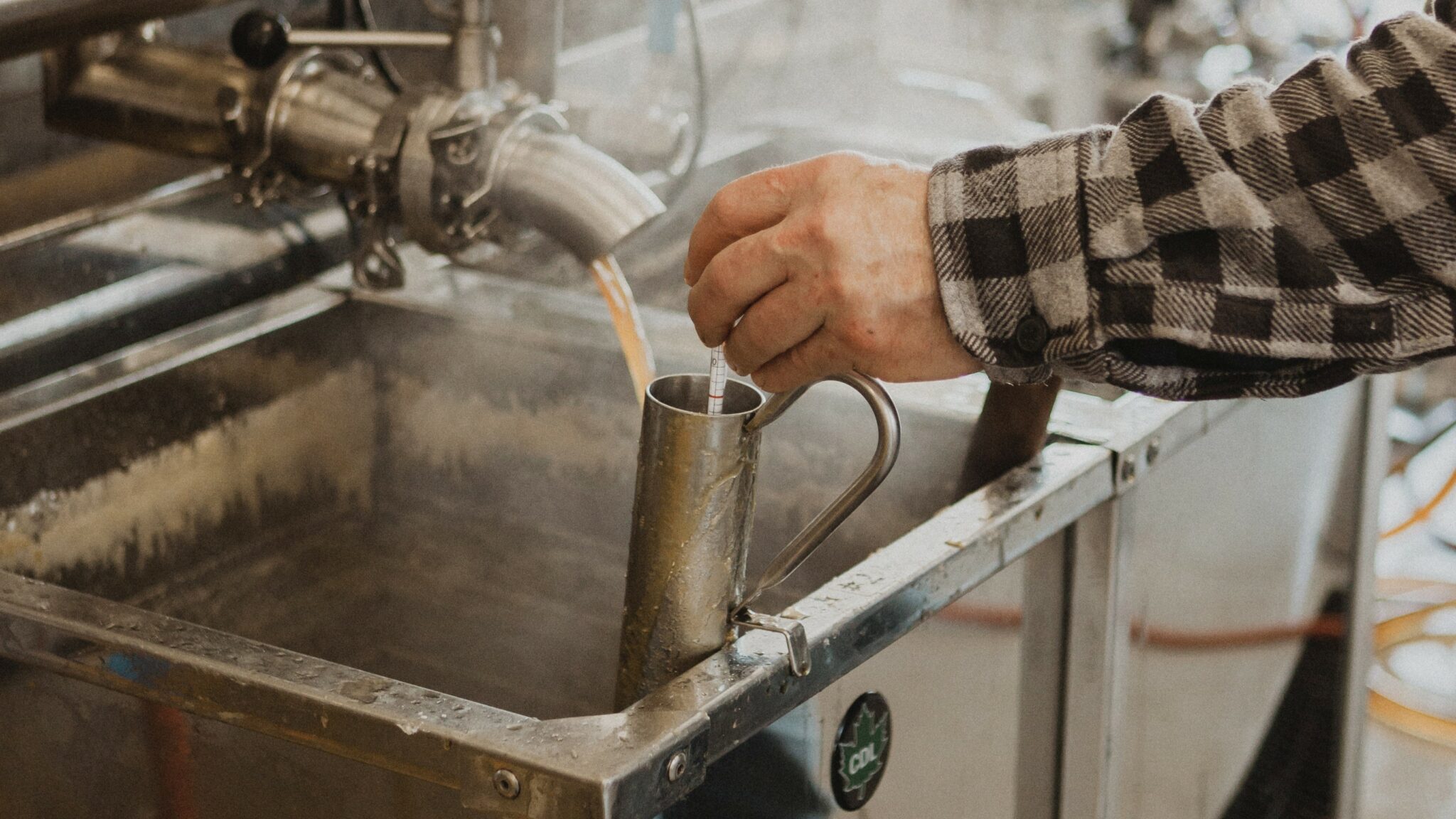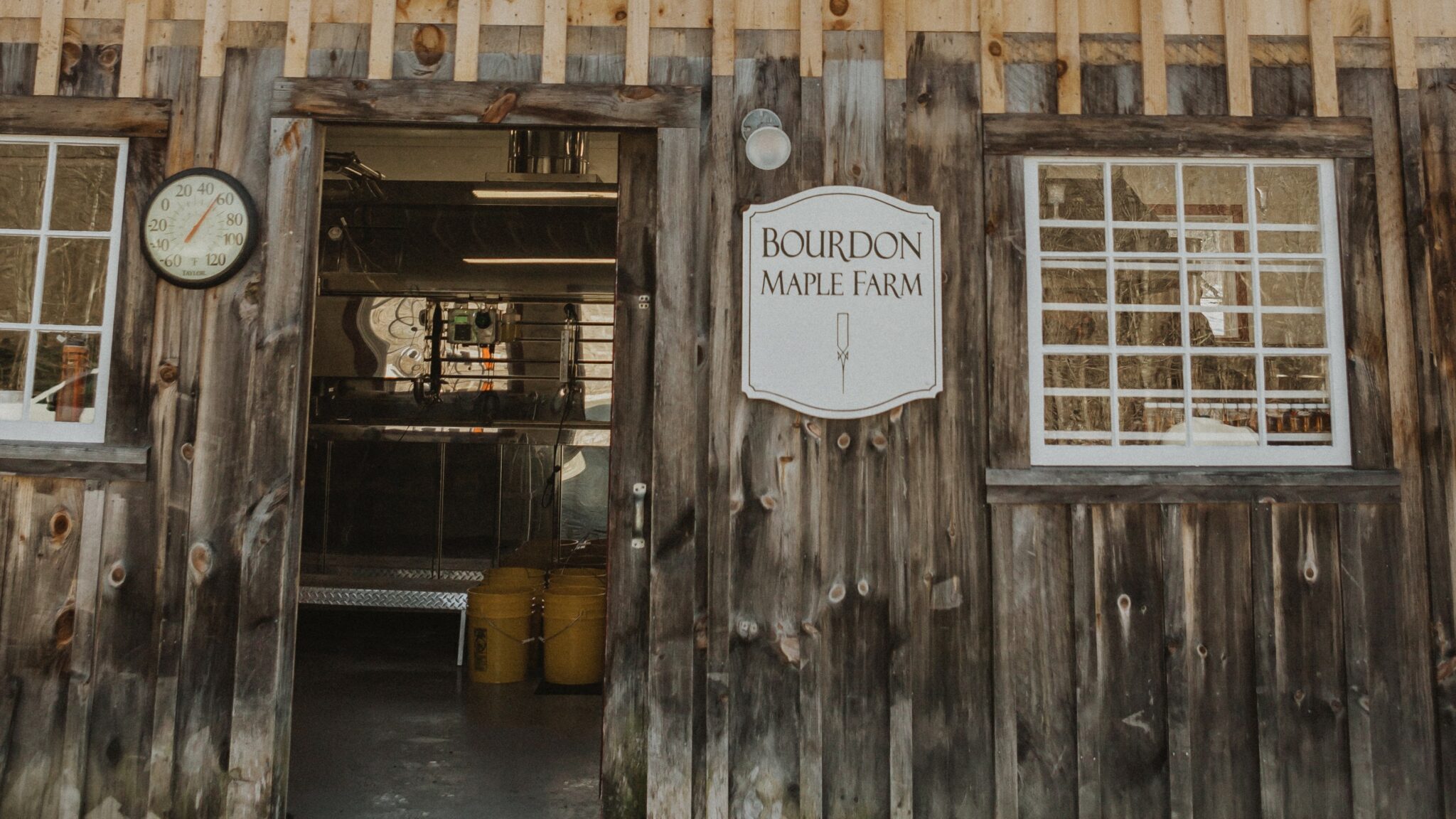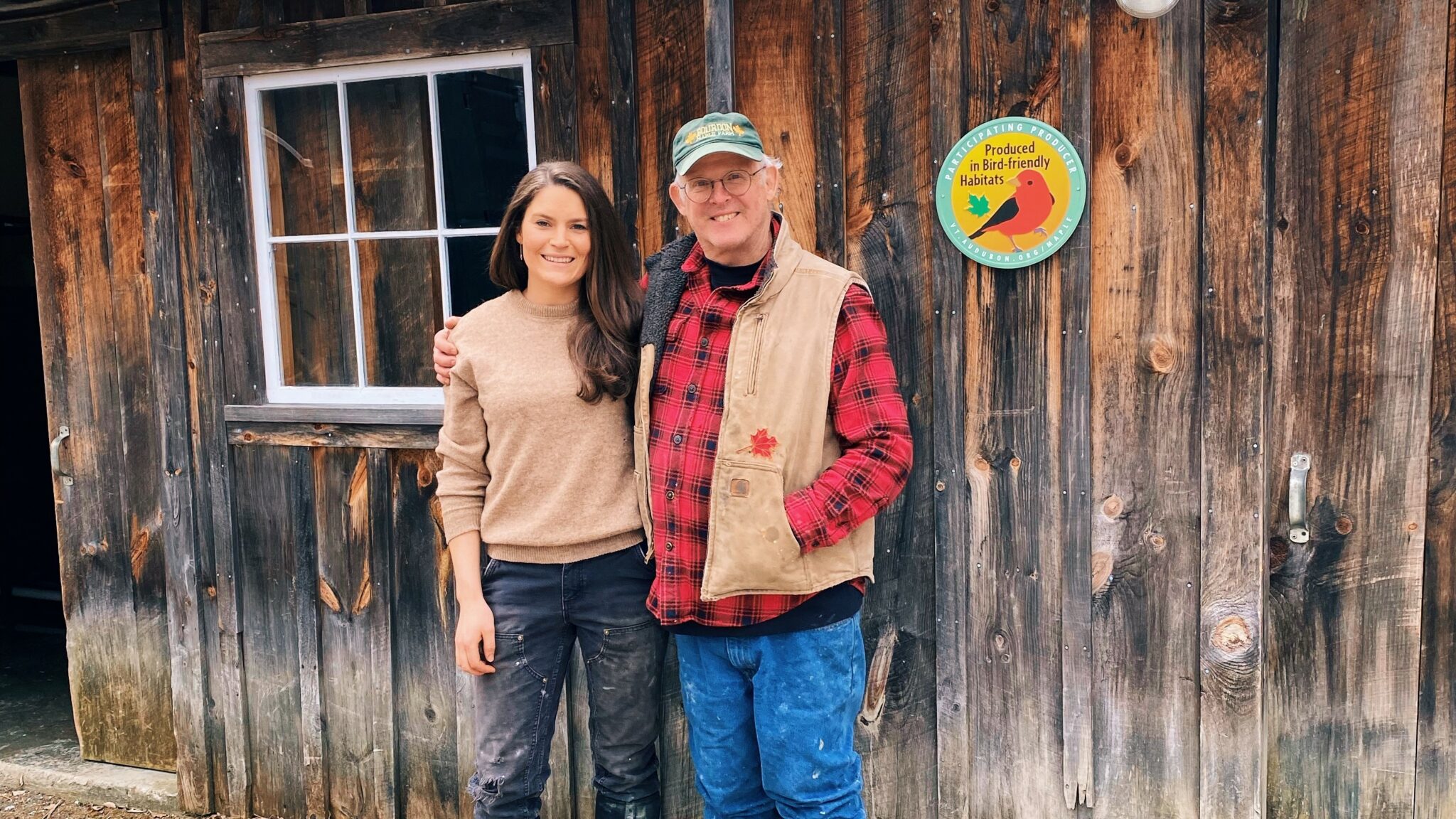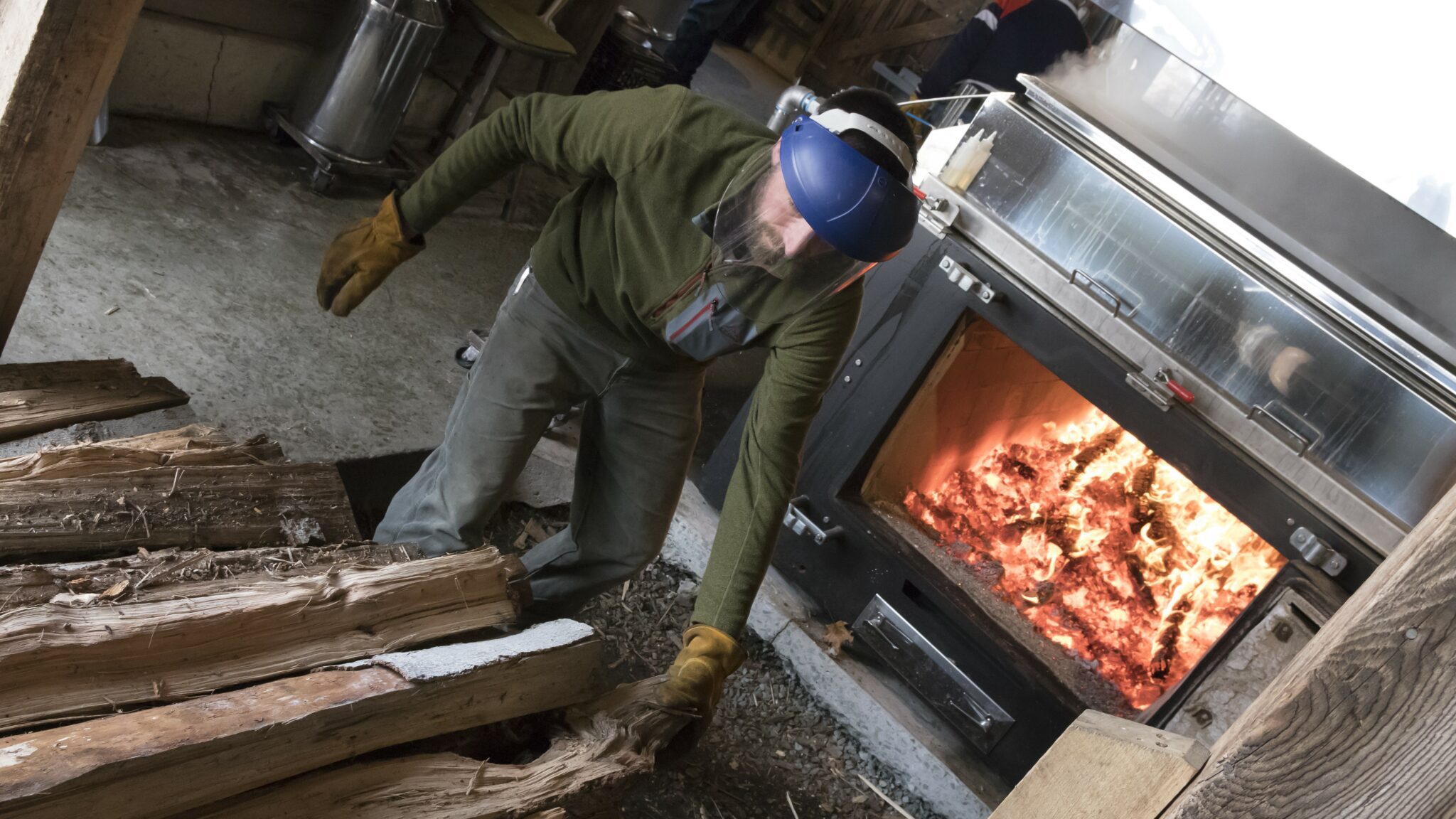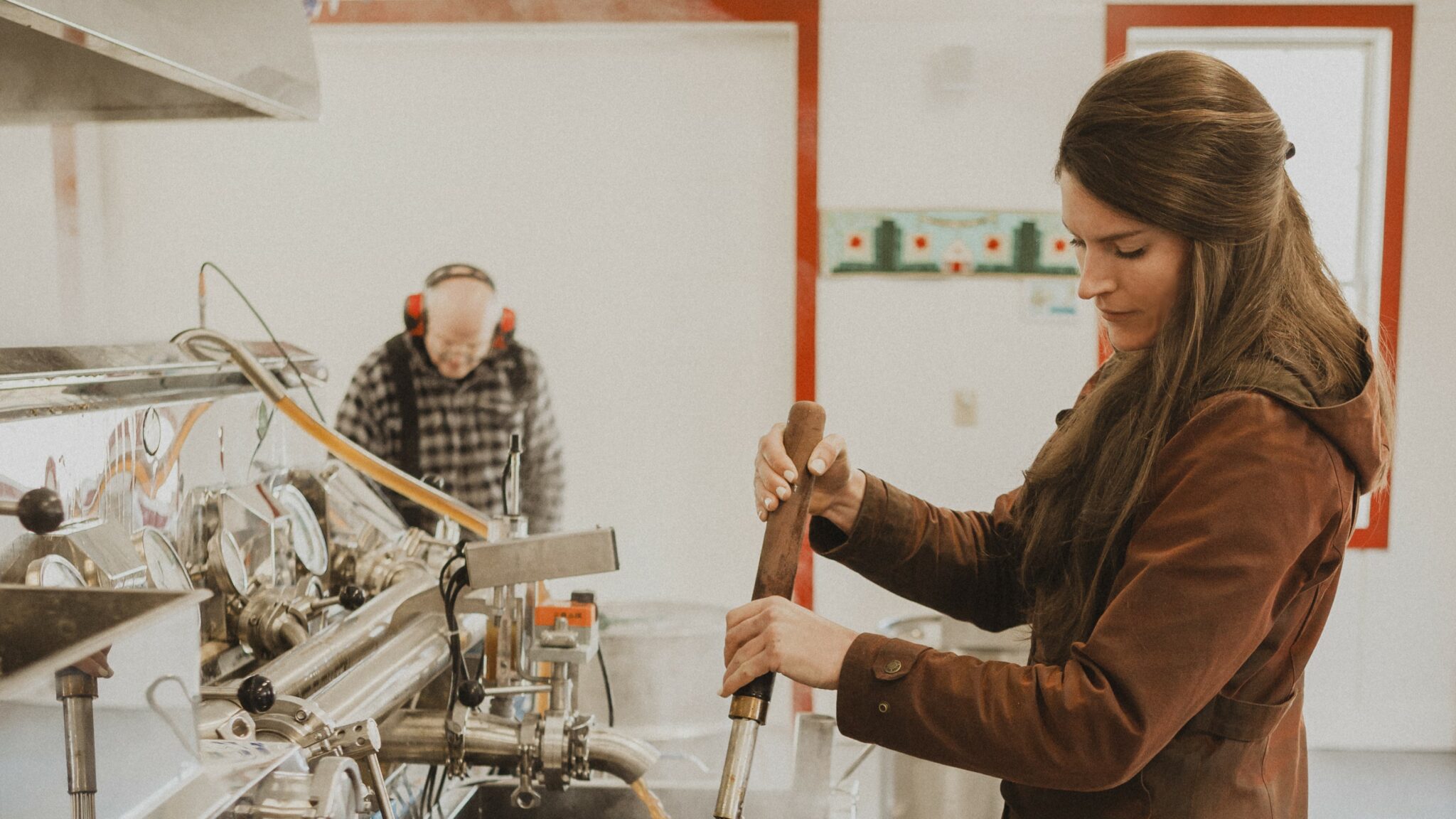By Robert Shumskis, Standard Correspondent
Following two months of topsy-turvy weather that has included 52 degrees in December and major snowstorms in January, local maple sugar farms are preparing to begin making syrup as temperatures warm up again. The wild weather is the latest curveball farmers have been faced with as they continue to deal with inflation and supply chain holdups that have led to increased production costs.
“Sap is coming in, but not at a great rate,” says Don Bourdon, owner of Bourdon Maple Farm in Woodstock. “We’re not fully tapped-out, meaning that we don’t have all our trees online, so we’re not getting a full amount. This is the earliest that we’ve collected sap since I’ve been in the business. People often ask, ‘What does this mean for the 2023 maple season?’ and I, as well as many others in the same boat, can’t be that predictive. It’s so weather dependent. In years past, our first boil has been around the 10th or 12th of March. Half of our crop is usually in April in terms of gallons made. I don’t know where this one’s going to end up. We just don’t know. Any agricultural pursuit is focused on good management and a good strategy, but certainly the weather.”
Currently, the Bourdons have collected about 4,000 gallons of sap. Once they get into the 8-10,000 gallon range, they will begin boiling to produce syrup. “We welcome a cool down, that’s for sure,” says Meg Emmons, Bourdon’s longtime employee. Bourdon says that another foot of snow would also be welcome. “For now,” Emmons concludes, “we’re trying to tap as fast as we can for this sap run. Then we hope that we’ll get a little break, maybe get some snow to rebuild the snowpack.”
“And some sleep,” Bourdon adds with a laugh.
A few miles to the east but not far behind in preparation is the Richardson Family Farm. Lying near the Woodstock-Hartland line, this farm has been home to the Richardsons since 1905. Today, the elder Gordon and his sons Reid and Scott manage about 11,600 taps which produce about 5,800 gallons each year. “We’re finishing up tapping now,” Reid Richardson states. “We’re on our last day of tapping. Then we’ll be able to go around to check for leaks with the vacuum on. Hopefully, we’ll be able to make some syrup later this week.” However, he says, “We may or may not keep it depending on what it tastes like. We usually let the first runs clean the lines out.”
Richardson says the weather has been somewhat frustrating, but he and his family are able to adjust. “There was certainly some sap weather that we gave up, but we have other things to do,” he stated. “There is firewood to cut and split, which is also part of the preparation work. It feels early today to be getting a sap run. We don’t usually start gathering sap until March, but we do like to be tapped by Valentine’s Day, typically. Every year is different.” Looking ahead to a forecast that includes mid-40s during the day and 20s overnight, he says hopefully, “That’s just the kind of weather we’re looking for. This will be an unusually early start for us; maybe a week before our previous earliest start.”
Bourdon’s family has owned their farm since 1942, but he was the first one to get into making syrup, which he officially started in 1995. However, he says, he was interested in the process well before that. “It grew from a passion I had as a young boy when I had a backyard operation of about 50 trees. I guess it got the better of me. We’re trying to have fun, but at the same time, make some syrup and promote the Vermont tradition.”
Today, he and his family oversee 10,000 taps across approximately 140 acres of trees. They also installed a state-of-the-art evaporator and sugarhouse three years ago. Bourdon says one big advantage of this system is that all the sap flows directly into holding tanks in the sugarhouse as opposed to going to tanks around the property; the latter would require work to transport the sap and, in turn, require more people and expenses.
The other advancement of this system is a variety of sensors that allow the workers to always keep an eye on things. The first of these sensors are vacuum monitors that are attached to the end of every main line. “We must have 60 sensors out there [in the sugarbush],” Emmons states. “We can tell if the vacuum is running well in several sections but then, all of a sudden, if one line is much lower, we know there is a leak in that spot. We also have sensors on our tanks to measure depth. We can check on our phones when we’re in bed overnight and not have to worry about running over here to check regularly.” Bourdon added, “Technology has enabled us to cut our costs, improve our product, and reduce the amount of time that might be required to do these tasks.”
Leaks are most commonly caused by downed tree limbs and animals. Richardson says that damage from squirrels on his farm has been reduced to a negligible amount thanks in part to the way they clean their lines, but coyotes have a tendency to chew on them as well, resulting in lines being punctured or completely split. “Those are all things you find out the second you turn the vacuum on.” He continues to say smaller animals can also cause huge problems. “We do have pest threats, though, like caterpillars, thrips, and the spotted lanternfly. These are things to be mindful of. We’re out in the forest and nature is busy 24/7.”
Increased prices are on everyone’s mind these days, but Bourdon and Richardson say they expect this factor to have a minor impact on retail pricing. Specifically, Bourdon states, “Inflation has occurred and food products are reflective of that. Maple prices have gone up slightly at the retail level, but not dramatically.” He continues, “The pandemic did bring some awareness to natural sweeteners as opposed to cane sugar and other sweeteners that are not as healthy.”
Richardson says, “I’ve certainly noticed inflationary price increases this year, in particular on supplies that we use. I haven’t taken the time to calculate how much more we’re paying. Supply issues have been plaguing us, particularly on the container side of things. Those issues are starting to subside, but there are still a few glass containers that we can’t get our hands on. We’d like to get them back because the customers liked them.”
Further, Bourdon observes that some influences go beyond our borders. Canada produces so much syrup (roughly 70% of the world’s supply is from Quebec alone) that they have a group called the Federation of Quebec Maple Syrup Producers, which is essentially the OPEC of maple syrup. As such, that group can manipulate the price point of syrup around the world. “We’re mindful of what goes on to the north and how it might affect us here.”
Vermont has its own consortium to organize and promote local producers. According to Emmons, the effort appears to be working. “Demand has been steadily increasing over the years and so has supply, thanks to more interest in the industry and technology,” she says. “The state, specifically the Vermont Maple Sugar Makers’ Association, is trying to increase awareness to the consumer, which I think they are doing successfully.” As this sugaring season gets underway, local farmers will appreciate every pint of support.
